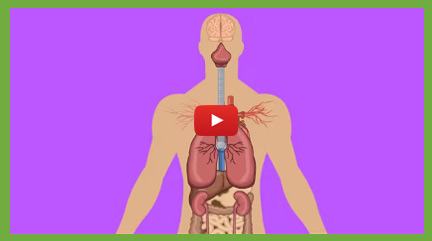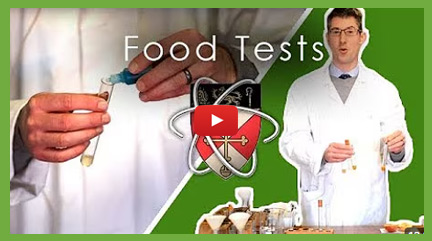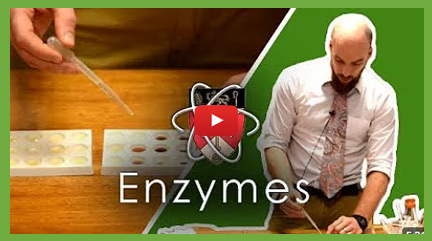
The Digestive System
The digestive system is a group of organs that work together to break down food into smaller molecules the body can absorb and use. In GCSE Biology, you'll learn how enzymes help with digestion, the roles of different organs like the stomach and small intestine, and how nutrients are transported into the blood.
Practicals on this page:
Food tests, Enzymes
Cell Organisation
In multicellular organisms, cells are organised into tissues, organs, and organ systems to carry out specific functions efficiently.
- A tissue is a group of similar cells working together (e.g. muscle tissue).
- An organ is made of different tissues working together (e.g. the stomach).
- An organ system is a group of organs working together to perform a larger function (e.g. the digestive system).
The digestive system is an example of an organ system where different parts work together to break down food and absorb nutrients.
What are Enzymes?
Enzymes are biological catalysts – they speed up chemical reactions in the body without being used up themselves. In digestion, enzymes help break down large food molecules into smaller, soluble ones that can be absorbed into the bloodstream.
There are three main types of digestive enzymes:
- Carbohydrases (like amylase) break down starch into sugars (glucose).
- Proteases break down proteins into amino acids.
- Lipases break down lipids (fats) into fatty acids and glycerol.
These enzymes are produced in organs such as the salivary glands, pancreas, and small intestine.
Bile and the breakdown of food
Bile is a substance made in the liver and stored in the gall bladder. It plays an important role in digestion by:
- Emulsifying fats – breaking large fat droplets into smaller ones to increase surface area for lipase to work.
- Neutralising stomach acid – making conditions in the small intestine more alkaline, which is the optimum pH for many enzymes.
Together, enzymes and bile ensure that food is efficiently broken down and nutrients are absorbed into the body.
Also see The Digestive System, Respiration, Photosynthesis, Reproduction, Transpiration.
Revision Notes

The Cornell method is like a supercharged note-taking system that helps you ace your revision!
Print out our blank revision notes pages to help you revise.
How to make effective revision notes with the Cornell method.
Exam Questions & Answers

Download and print off practice our FREE worksheet with exam style questions on Cell Biology.
PRACTICAL - Food Tests
In this required practical, you’ll test different food samples to identify key nutrients: starch, sugars, proteins, and lipids. Each test uses a different chemical:
- Iodine for starch (turns blue-black)
- Benedict’s solution for sugars (turns brick-red when heated)
- Biuret solution for proteins (turns purple)
- Sudan III or ethanol for lipids (red layer or cloudy emulsion)
This practical helps you learn how to safely carry out chemical tests and understand what different food types contain.
PRACTICAL - Enzymes
In this required practical, you’ll investigate how factors like temperature or pH affect enzyme activity, usually using amylase, which breaks down starch. You mix amylase with a starch solution and test samples at regular intervals using iodine.
By timing how long it takes for the starch to break down (when the iodine no longer turns blue-black), you can see how different conditions affect the rate of reaction. This practical helps you understand how enzymes work best under optimum conditions and what happens when conditions are too extreme.
Revision Notes

The Cornell method is like a supercharged note-taking system that helps you ace your revision!
Print out our blank revision notes pages to help you revise.
How to make effective revision notes with the Cornell method.




